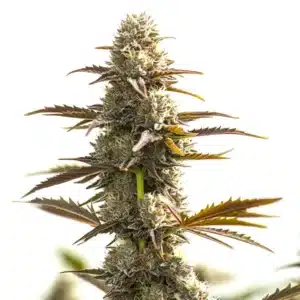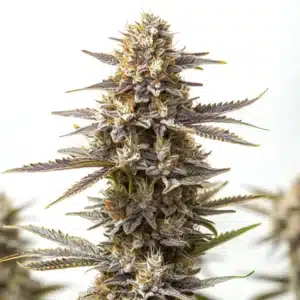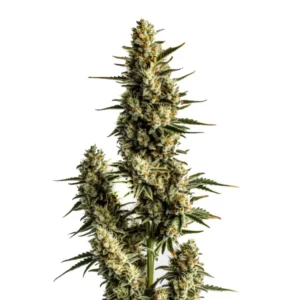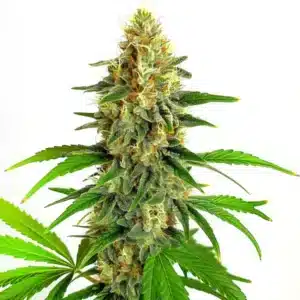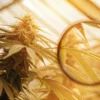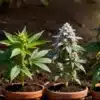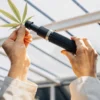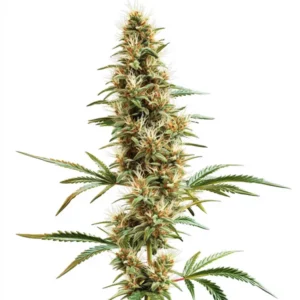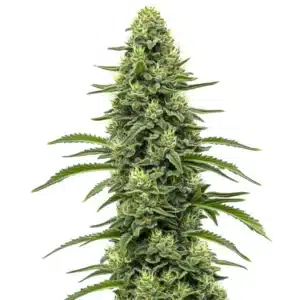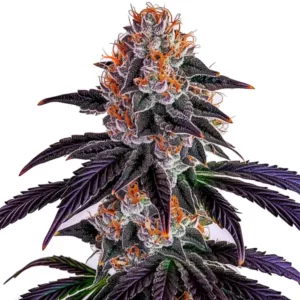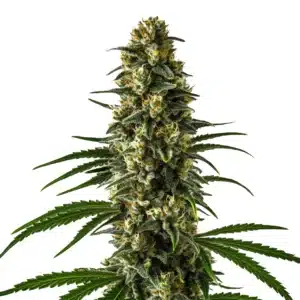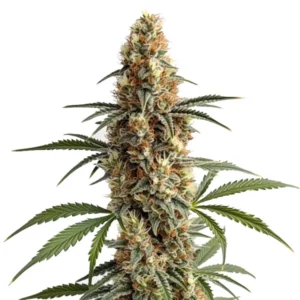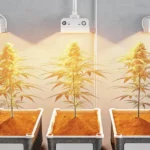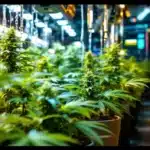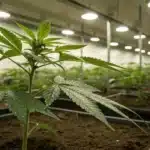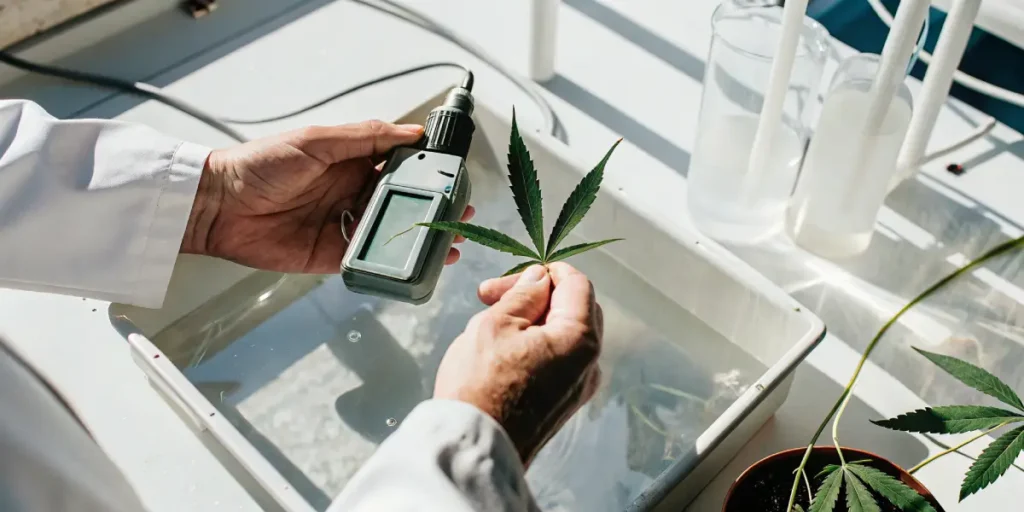
Leaf Water Potential Measurements in Cannabis
Leaf water potential is a crucial factor in cannabis cultivation. It helps growers understand how much water their plants are actually using and how stressed they might be. Conducting regular leaf water potential measurements in cannabis can optimize your growth strategies, ensuring your plants stay healthy and productive. By monitoring this parameter, you can make informed decisions about irrigation and other care routines.
Several techniques exist for leaf water potential measurements in cannabis. These can range from traditional methods using pressure chambers to newer, non-destructive methods. The choice of technique often depends on your resources and the level of precision you need. Regardless of your choice, knowing this concept is key to maximizing your cannabis yield.
Recommended Strains
Blue Dream
|
|
THC | 17% - 24% (Medium) |
|
|
Type | Feminized |
|
|
Yield | High |
|
|
Phenotype | 50% Indica / 50% Sativa |
GG4
|
|
THC | 27% (High) |
|
|
Type | Feminized |
|
|
Yield | High |
|
|
Phenotype | 40% Indica / 60% Sativa |
For both novice and experienced growers, managing water stress is vital. Leaf water potential measurements help identify when your plants are becoming stressed due to lack of water or too much. This not only impacts their growth but ultimately affects the yield quality and quantity. By keeping a close eye on these measurements, you can optimize cannabis growth and ensure a bountiful harvest.
Leaf Water Potential Measurement Techniques in Cannabis Cultivation
Various methods are available for measuring leaf water potential in cannabis. Traditional pressure chambers are widely used, providing accurate readings by determining the pressure needed to force water out of the leaf. While effective, this method can be destructive and require careful handling.
Non-destructive methods are becoming increasingly popular. These include the use of psychrometers and other sensor-based technologies. Psychrometers measure humidity and temperature to infer water potential, offering a less invasive way to monitor your plants. These techniques are ideal for growers who want to maintain the integrity of their plants during measurement.
The selection of appropriate leaf water potential measurement techniques in cannabis cultivation is critical for achieving optimal results. Growers must weigh the benefits of each method against its potential drawbacks, such as cost, ease of use, and impact on plant health. This careful consideration ensures that the chosen technique aligns with the specific needs of the grow operation.
Besides to individual plant monitoring, these techniques can be applied to large-scale operations, providing valuable data across entire grow rooms or fields. This scalability is particularly advantageous for commercial growers looking to maximize efficiency and output. By integrating these techniques into their cultivation practices, growers can achieve better control over plant health and productivity.
Impact of Leaf Water Potential on Cannabis Yield
Leaf water potential directly affects cannabis yield. Plants with optimal water potential are healthier, translating into better growth and higher yields. When plants experience water stress, their growth slows, and they may not produce the desired amount of buds or flowers.
To illustrate, consider the strain Blue Dream from Blimburn Seeds. This strain thrives when its water potential is carefully monitored and maintained. By ensuring that Blue Dream plants are not water-stressed, growers can expect robust growth and a high yield of potent buds.
The impact of leaf water potential on cannabis yield cannot be overstated. Proper management of this parameter ensures that plants receive adequate hydration, promoting vigorous growth and optimal flowering. Growers who prioritize leaf water potential measurements in cannabis cultivation can expect to see significant improvements in both the quantity and quality of their harvest.
Knowing the relationship between leaf water potential and yield allows growers to make strategic adjustments in their cultivation practices. This proactive approach helps prevent common issues associated with water stress, such as leaf wilting and nutrient deficiencies. By maintaining ideal water potential levels, growers can achieve higher yields and more consistent results season after season.
Promos & Deals
Cannabis Leaf Water Potential and Irrigation Scheduling
Irrigation scheduling can be optimized using leaf water potential measurements. By knowing when your plants need water, you can set up an efficient irrigation schedule that meets their needs without wasting resources. This is particularly useful for strains like Critical Mass from Blimburn Seeds, which require careful management of water intake for optimal growth.
A well-planned irrigation schedule based on accurate leaf water potential readings can prevent both under-watering and over-watering. Under-watering can lead to plant stress and reduced yield, while over-watering can cause root rot and other issues. By tailoring your irrigation practices to the specific needs of your cannabis plants, you can enhance overall growth and productivity.
Leaf water potential measurements in cannabis serve as a valuable tool for refining irrigation practices. By providing precise data on plant water needs, these measurements enable growers to fine-tune irrigation schedules, ensuring that water is delivered efficiently and effectively. This not only conserves resources but also supports sustainable growing practices.
The integration of cannabis leaf water potential and irrigation scheduling can lead to significant improvements in crop management. By aligning water delivery with plant needs, growers can reduce waste and minimize the risk of water-related issues. This approach fosters an environment where plants can thrive, resulting in healthier growth and more abundant yields.
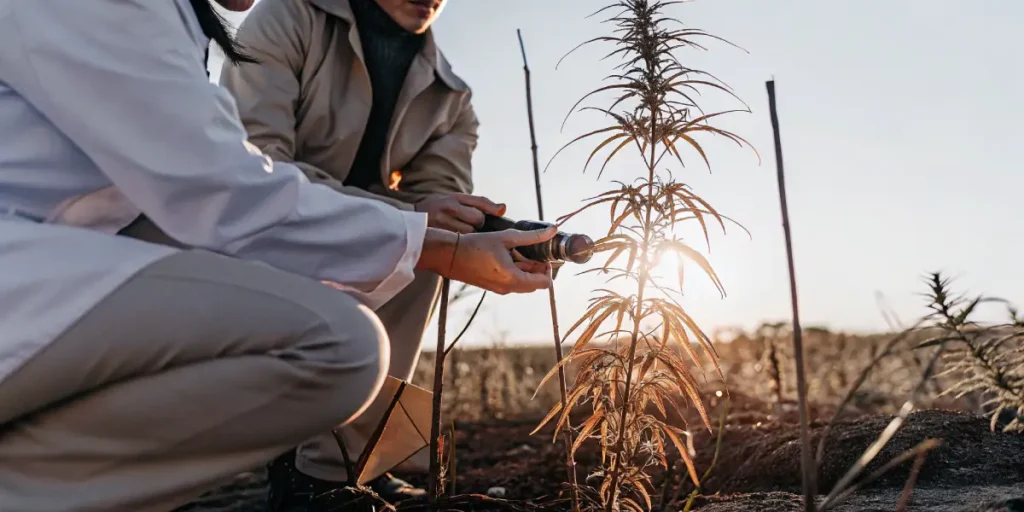
Optimizing Cannabis Growth with Leaf Water Potential Monitoring
Leaf water potential monitoring allows growers to optimize cannabis growth by providing real-time data on plant health. This information is crucial for making timely adjustments to water, nutrients, and overall care. Strains like Gorilla Glue 4 from Blimburn Seeds benefit significantly from such close monitoring, ensuring they reach their full potential.
Using leaf water potential data, growers can adjust nutrient delivery to match the plants’ water uptake capacity. This ensures that the plants receive the right amount of nutrients without risk of overloading the system. By aligning nutrient delivery with water potential, you can improve plant health and yield.
Optimizing cannabis growth with leaf water potential monitoring involves leveraging data to make informed decisions about plant care. This proactive approach helps growers address potential issues before they escalate, resulting in a more stable and productive growing environment. Consistent monitoring also allows for the early detection of stressors, enabling quick intervention.
By incorporating leaf water potential measurements in cannabis cultivation, growers can create a dynamic and responsive growing system. This adaptability is key to achieving high-quality yields and maintaining plant health. As growers become more attuned to the needs of their plants, they can refine their techniques and continue to improve their cultivation practices.
Non-Destructive Methods for Measuring Leaf Water Potential in Cannabis
Non-destructive methods for measuring leaf water potential are increasingly favored by cannabis growers. These methods, such as the use of thermal imagery and soil moisture sensors, offer a way to monitor plant health without damaging the plant. They provide continuous data, allowing for real-time adjustments and better management.
Thermal imaging, for example, can detect variations in leaf temperature related to water stress. This method allows for a quick assessment of plant health across large areas, making it ideal for commercial growers. Soil moisture sensors, on the other hand, provide data on soil conditions, helping to correlate soil moisture with leaf water potential.
The adoption of non-destructive methods for measuring leaf water potential in cannabis marks a significant advancement in cultivation technology. These methods allow for ongoing monitoring without compromising plant integrity, enabling growers to track changes in plant health over time. This continuous data stream is invaluable for making timely adjustments to cultivation practices.
Incorporating non-destructive measurement techniques into cannabis cultivation can lead to more precise and sustainable growing practices. By minimizing plant disturbance, growers can maintain plant health while gaining critical insights into water dynamics. These methods contribute to a holistic approach to cultivation, supporting long-term success.
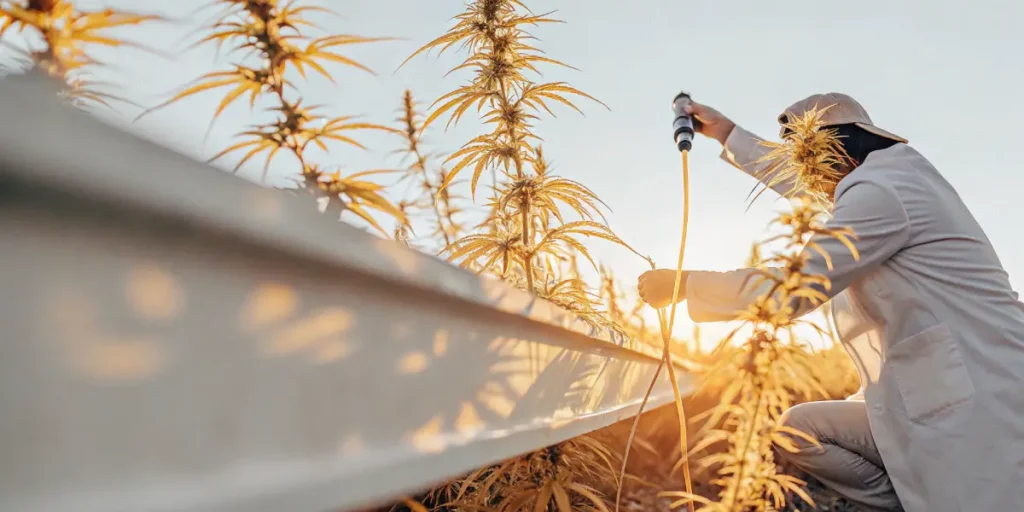
FAQs
What is the importance of leaf water potential measurements in cannabis?
Leaf water potential measurements in cannabis are vital for knowing plant water stress levels. They help growers determine when plants need watering, preventing both over-watering and under-watering. This balance is essential for maintaining plant health and optimizing yield.
By accurately measuring leaf water potential, growers can tailor their irrigation practices to the needs of their plants. This not only conserves water but also ensures that the plants receive the right amount of nutrients, further enhancing growth and productivity.
Knowing the importance of leaf water potential measurements in cannabis is key to achieving consistent and high-quality results. These measurements provide critical insights into plant health, allowing growers to address water-related issues before they impact yield. This proactive approach is essential for maintaining a successful cultivation operation.
Incorporating these measurements into regular cultivation practices can lead to more efficient resource use and improved plant outcomes. By focusing on leaf water potential, growers can develop a deeper knowing of their plants’ needs, ultimately leading to better overall performance and higher yields.
How can leaf water potential impact cannabis yield?
Leaf water potential impacts cannabis yield by influencing plant stress levels. When plants are stressed due to improper water levels, their growth can be stunted, leading to lower yields. Proper management of leaf water potential results in healthier plants and higher yields.
Growers using strains like Blue Dream can expect improved results by closely monitoring and managing leaf water potential. This approach ensures that the plants receive optimal care, leading to a more abundant and potent harvest.
Recognizing how leaf water potential impacts cannabis yield is crucial for growers aiming to maximize their harvest. By maintaining optimal water levels, plants can achieve their full growth potential, resulting in more robust and productive crops. This strategic focus on water potential is integral to successful cannabis cultivation.
Through diligent monitoring and adjustment, growers can mitigate the negative effects of water stress, such as reduced bud development and poor plant health. By prioritizing leaf water potential, growers can enhance their cultivation practices and achieve superior results.
What are some non-destructive methods for measuring leaf water potential?
Non-destructive methods for measuring leaf water potential include the use of psychrometers, thermal imaging, and soil moisture sensors. These techniques offer continuous, real-time data without harming the plants, making them suitable for both small-scale and commercial operations.
These methods provide growers with valuable insights into plant health, allowing for timely adjustments to water and nutrient delivery. This proactive approach helps in maintaining plant health and maximizing yield potential.
Exploring non-destructive methods for measuring leaf water potential opens up new possibilities for cannabis growers. These technologies provide ongoing data without compromising plant health, making them ideal for maintaining a stable growing environment. By using these methods, growers can gain a deeper knowing of their plants’ needs.
As these technologies continue to evolve, they offer even greater precision and ease of use, enabling growers to refine their cultivation techniques further. By adopting non-destructive methods, growers can enhance their ability to respond to plant needs and improve overall crop performance.
How do leaf water potential measurements aid in irrigation scheduling?
Leaf water potential measurements aid in irrigation scheduling by providing precise data on when plants need water. This information allows growers to create efficient irrigation schedules, ensuring plants receive water at the right time and in the right amount.
For strains like Critical Mass, having an optimized irrigation schedule based on leaf water potential can significantly improve growth and yield. This approach minimizes water waste and prevents issues like root rot, which can arise from improper watering practices.
Utilizing leaf water potential measurements in cannabis irrigation scheduling is a strategic approach to resource management. By aligning water delivery with plant needs, growers can reduce waste and improve plant health, leading to more consistent and productive yields.
These measurements offer a detailed knowing of plant hydration requirements, allowing for fine-tuning of irrigation practices. This precision is particularly beneficial for growers aiming to achieve optimal results with minimal resource use, supporting sustainable cultivation practices.
Can leaf water potential monitoring help in pest and disease management?
Yes, leaf water potential monitoring can assist in pest and disease management. Healthy plants are less susceptible to pests and diseases, and by maintaining optimal water potential, growers can keep their plants robust and resistant.
By ensuring that plants are not stressed, growers can reduce the likelihood of infestations and disease outbreaks. This proactive approach leads to a healthier crop, minimizing the need for chemical interventions and promoting sustainable growing practices.
Leaf water potential monitoring plays a critical role in pest and disease management by maintaining plant health and reducing vulnerability to stress-related issues. Well-hydrated plants are more resilient, making them less prone to infestations and diseases.
By keeping a close watch on water potential, growers can implement timely interventions to prevent the onset of stress-related problems. This proactive strategy supports a healthier growing environment, reducing the need for chemical treatments and fostering sustainable practices.




